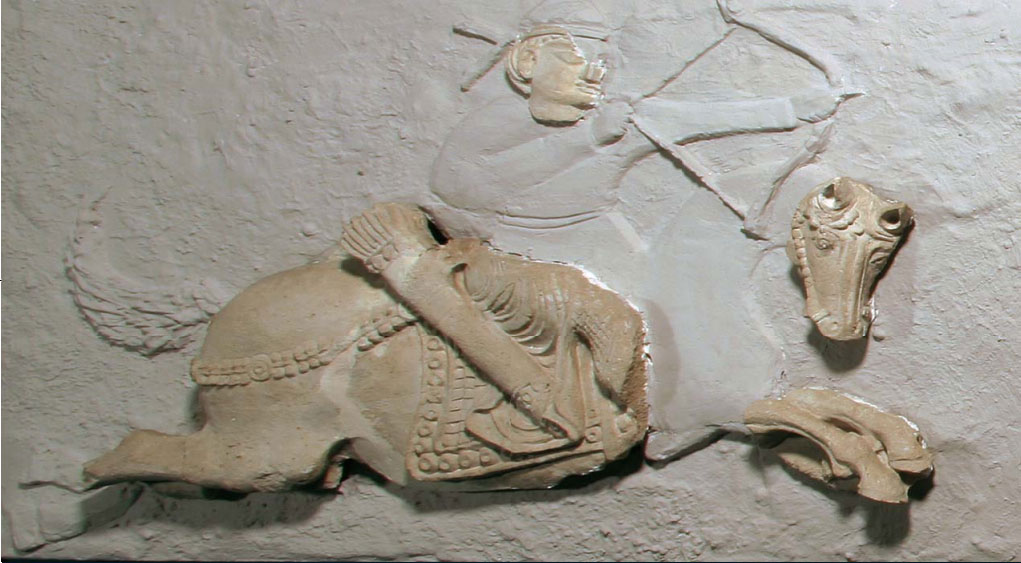EphtHalite State (5th - first half 6th centuries AD). The Ephthalite state was formed between 427-484 AD and stretching from the Caspian Sea to Kashgar and from the Aral Sea to India, was a confederation of semi-independent possessions with their own hereditary dynasties under who acknowledge the suzerainity of a single king. The Ephthalites battled with Sasanid Persia. Popular legends and poetry used by Firdausi in the creation of the Shahnama preserve heroic episodes of the period of struggles between the Ephthalite ruler of Vakshunvar with the Sasanid ruler Peroz. Turkish Kaghanate (6th-7th Centuries AD). In the mid 6th century AD in Central Asia a new state arose – the Turkish Kaghanate. Wars between the former eastern and western Turkish khaghanates in Central Asia led to the disintegration of the former and its absorption into the latter. ”Never in ancient times were the northern nomads so strong”, wrote a Chinese chronicler at the end of the 6th-early 7th century, regarding the powerful state of the Turks. “Almost all the khans married the daughters of Chinese rulers and the Chinese court every year sent a gift of 100,000 pieces of silk cloth.” The Turkish khans meddled little in the life of local society, limiting themselves to the collection of tribute.

Kuva (7th-8th Centuries AD).
In the written sources of the 5th-8th centuries AD Ferghana was called Bokhan, Pakhinna or Feikhan, its ruler bearing the title of ikhshid. Ferghana actively participated in international trade, exporting horses, dyes, medicines, coloured glass, etc. The capital of this region, according to one source, was Akhsikent, and to others, Kasan. In the display case dedicated to Ferghana are shown images of excavations of a domestic complex of the 7th -8th centuries AD in Kuva, a sculpture from a Buddhist temple discovered on this site and circular coins with rectangular central openings of Chinese type.
Varakhsha (6th-7th Centuries AD).
Among a whole series of known Sogdian monuments, Varakhsha, located some 40 km to the north west of Bukhara in the Kizil Kum Desert, occupies a special place. Varakhsha was the residence of the ruler of this fertile oasis region in the 6th-7th centuries AD, whose palace is of particular interest. In a corner of this section of the museum there is a partial reconstruction of the ‘Red Hall’ discovered during the excavation of the site of the palace of Varakhsha. Here are displayed original fragments of the hall’s wall paintings with splendid scenes of riders seated on elephants struggling with fantastic animals. These are probably scenes representing the perpetual struggle between good and evil which is a central tenet of the Zoroastrian religion, which held sway in the region at that time. The exhibit also includes sophisticated plaster decoration depicting galloping horse with armed riders hunting wild deer and rams, a dragon, fish, a file of partridges, scenes of sacrifice, harpies, dancers, etc.